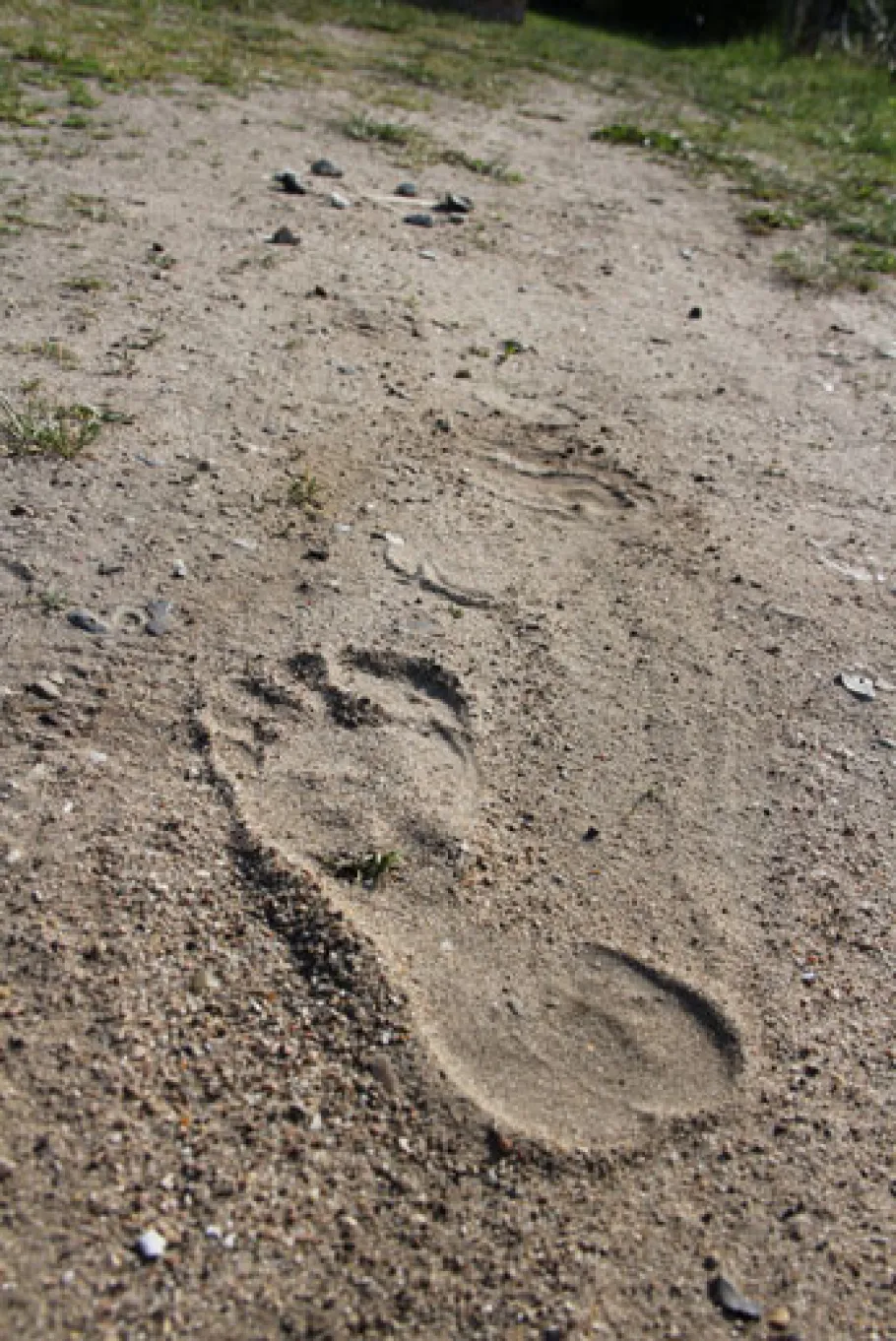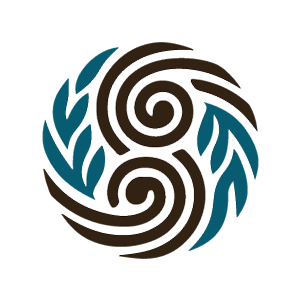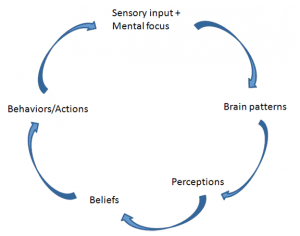
"Learning is the process whereby knowledge is created through the transformation off experience.“ (David A. Kolb)
David A. Kolb states in the context of his experiential learning theory that learning is best conceived as a continuous process that is grounded in experience rather than in terms of outcomes. Contemporary learning theories state that experience and reflection play an important role in the development of ideas and skills. Reinforcement and practice are the two ways to encourage that. Social interaction encourages learning as well.
Modern learning theories recognize the role of culture in the process of learning, construction of understandings and development of abilities (Hammond et al. 2001).
Learning is a process of drawing connections of what is already known or understood with new information. This means encoding and storing information in memory as well as processing and sorting information as well as applying it at the appropriate times and situations. (Hammond et al. 2001).
Brain patterning cycle from Young et al. 2010
The brain patterning cycle Everything we experience with our senses together with what we focus our mental attention on results in brain patterns. They determine our perceptions how we see the world and our beliefs. Our beliefs, in turn, determine our actions and behaviors. Then our actions and behaviors determine our sensory inputs and our mental focus. Then the cycle comes back full circle to the sensual experiences and mental attention. This means that our behaviors form our habits over time by repetition.
Brain patterns cause us to notice specific things so that we will not notice almost everything else because our brain recognizes things that we expect to see. But once we recognize that, we know what to look for and the veil is lifted (Young et al 2010).
So it can be concluded that learning changes the physical structure of the brain and as a result of continuous interactions between the learner and the external environment, different brain structures and functioning evolve.
Individual learning Identification of a learner´s individual needs and ways of learning helps to better understand the learning process. Therefore reflection by the learner and the teacher/mentor about the learning process is essential.
Learning environment People learn by making sense of the environment and of stimuli around them. Emotions also play a role in the learning process. Students can be distracted by negative emotions from learning or rather be supported by positive emotions.
Environments that are rich with positive stimuli and provide useful feedback in response to a learner’s efforts support effective learning (Hammond et al. 2001).
Since our environment is mainly formed by our cultures, the role of culture is central for learning.
Role of culture Cultures guide every individual to develop brain patterns through various ways such as the spoken language, customs and ceremonies and more. All these actions inform the individual where to pay attention. So culture can be regarded as the water that every individual swims in as they grow and develop. Cultures form connections between individuals and their environment. So learning could also be regarded as a process of connection with other people and the environment that opens our awareness to the world. Thus there is a difference between information-based education and culture-driven connection facilitation which is much more regenerative and empowering (Young et al. 2010).
A model for a regenerative learning culture is the 8 shields model based on the flow learning cycle.
The Flow of learning:
- Start by creating enthusiasm
- Move into focusing attention
- Concentrate on direct experience of nature
- Gather and share the inspiration
This cycle is much about awakening the genius and curiosity in the student rather than over-feeding them with information. Asking the right questions rather than giving answers helps to support the process.
By creating a direct need to do or learn something the teacher/mentor ensures direct experience of nature.
This cycle works quite well as it matches our need to connect with the natural cycles into that we were born as human beings.
8 Shields- Orienting to the natural cycles
We already know the natural cycles quite good, since we experience the changes of day and night, from spring to winter. Round and round the sun goes, beginning in the east, moving towards south and then west and finally resting in the north before rising again. The 8 shields learning cycle is based on this natural cycle of life which is in our bones and in our daily schedule.
It reflects the process which is needed to undergo for learning in a very effective and deeply connected way. The action learning spiral from David Kolb can be applied to this model.
Each shield contains all eight shields in itself like a fractal which means each step is a full cycle by itself.
8 Shields
Action learning spiral
East: Inspiration
Southeast: Activation
Design
South: Focus
Practical work
Southwest: Break
West: Gathering and Sharing
Observation of effects
Northwest: Reflection
Northeast: Ground for new inspiration
Reflection and Theory
North: Integration
The Four pillars of learning The four pillars of learning, as proposed by the International Commission for the Twenty-first Century in its Report to UNESCO “Learning: The Treasure Within” give an overview of the four learning levels that are required to be covered during successful learning processes:
- Learning to know Learning to know implies managing instruments of knowledge such as memory, imagination, reasoning, problem-solving, and the ability to think in a coherent and critical way. It is a long-time process which goes more deeply than the information delivered by subject teaching and preassumes that the student is capacity of learning to learn through the power of concentration, memory and thought throughout life.
- Learning to do This pillar of learning is about applying what has been learned into practice. It is linked to technical education and work-skill trainings, but goes far beyond making specific things or doing certain tasks. It addresses the more behavioral than intellectual level of learning.
- Learning to live together It implies discovery of others and on another as well as the experience of shared purposes. Therefore it implies development of knowledge and understanding of self and others, appreciation of the diversity of the human race and an awareness of the similarities between and the interdependence of all humans. Furthermore empathy and cooperative social behavior in caring and sharing; respect of other people and their cultures and value systems as well as capability of encountering others and resolving conflicts through dialogue. Additionally the competency in working towards common objectives.
- Learning to be This refers to learning to be human by cultivating qualities of imagination and creativity, acquiring universally shared human values, developing aspects like reasoning, aesthetic sense, physical capacity, communication and social skills as well as personal commitment and responsibility.
Practical application of the addressed learning cycles and levels is found in the Accelerated Learning model as an overall approach for teaching.
References:
- Jon Young, Ellen Haas and Evan McGown: Coyote's Guide to Connecting with Nature, 2010
- Linda-Darling Hammond, Kim Austin, Suzanne Orcutt, Jim Rosso: How people learn. Introduction to learning theories, Stanford University School of Education 1, 2001
- David A. Kolb: Experiential Learning. Experience as the Source of Learning and Development, Englewood Cliffs 1984
- Zhou Nan-Zhao: Four ‘Pillars of Learning’ for the Reorientation and Reorganization of Curriculum: Reflections and Discussions, UNESCO
Article written by Sarah Daum 30/05/2014
- Log in to post comments


